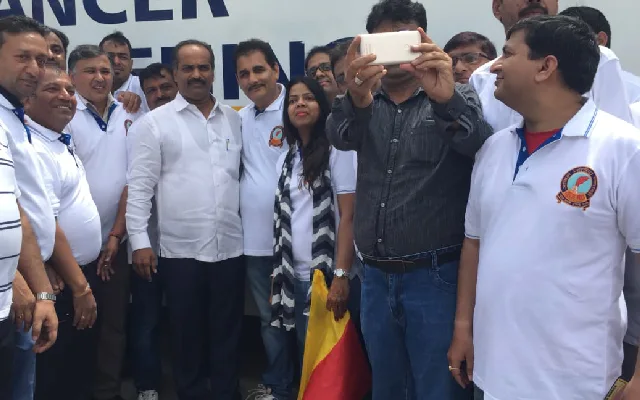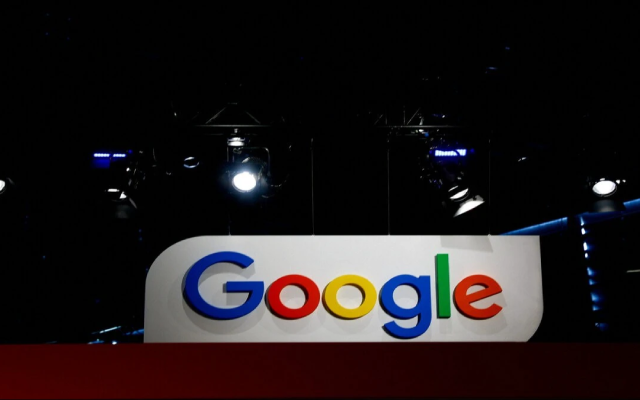Nursing is at its crossroads. The Nursing Profession – what was, and what is – has gone through a tremendous evolution. From the earliest times most cultures produced a stream of nurses dedicated to service on religious principles. Christians generated a stream of dedicated nurses and catholic nuns provided free nursing care for the poor. Nursing was a religious role and there was little role for science.
The nursing profession, at its core, has always been about caring for patients. However, it was once a female-dominated career in which nurses essentially served as assistants to doctors, caring for and cleaning up patients. The uniform of a white dress, white stockings, and white caps proclaimed their purity and commitment. They were called ‘Angels’ and it was true.

Thankfully, things are a lot different in the present times. Over the decades, nurses have evolved into highly specialized, well-respected members of the medical and health care teams. Many would even say that they are the true backbone of the healthcare industry.
Let’s take a look into how nursing has changed over the years.
More intense formal training
Nursing education is much more formal and comprehensive than it once was. Earning a bachelor’s degree or a master’s or doctoral degree – all of which provide an intense science and practical skills, and also research knowledge-based education. Nursing is one of the toughest courses to be completed.

Educators preparing the next batch of professional nurses for the health system need to know that the hospital no longer remains the foundation for the learning experience. Caring for the dependent person in disadvantageous circumstances is no longer the predominant activity of nurses.
More responsibility
With a stronger education foundation, nurses have gradually taken on more responsibilities be it in patient care, education, quality enhancement, research, etc as educators and administrators also as CEOs. Depending on the situation and what the state allows, nurses can work autonomously.
The impact of Technology
In the 21st century, the whole foundations of health care are being shaken. Technology is taking service to new heights of portability: less invasive, short-term, and with greater impact on both the length and quality of life. Like most professions, technology has reshaped the way nurses do their jobs today. In many ways, technology has helped nurses become more accurate, efficient, and it also helps to alleviate some of the physical demands. For example, patient records are almost completely digital today, not only allowing for less paperwork but helping prevent human error on charts. With patient histories available in a digital file, it is easier for nurses to understand and assess a patient. Other technological advances include better monitoring devices, implantable devices for administering medication, mobile apps to look up any medical information on the go and special beds and chairs so nurses don’t have to do as much heavy lifting.
The new technology of learning bodes well for the new substance of nursing education. Highly decentralized, Internet-moderated, satellite-facilitated, portable digital-assisted, and distance-based learning models, while in their infancy, are clearly a part of the emerging models for education in the 21st century. In less than 10 years the computer-based Internet and Web-based hardware will make it possible for learning to be located anywhere and for the person to be in direct verbal and visual communication with fellow students and professors in a wide variety of settings. The array of approaches to gaining knowledge and evidencing competence will allow the learner a wide variety of options to obtain what they need to grow and advance. Educational facilities will have 2 key functions in this decentralized environment—content provision and certification of learning. The medium and means of learning will be the responsibility of the student. A primary role of faculty will be in helping the learner choose the best form of access to learning that will best fit with the learner’s skill-sets, personal needs, and learning style. Following this, it remains for the faculty to be able to evidence that competence is present in the learner sufficient to move the learner to another stage in the developmental continuum.
More Specializations
After becoming an RN, there are still plenty of advancement opportunities in the field. Today’s nurses can earn certifications or pursue advanced nurse training/degrees to grow in their roles and increase their salaries. Fairly new nursing specialties in areas like forensic nursing and bioinformatics simply didn’t exist a few decades ago. And others have become more in demand with the advancement in the medical field and changing demographics, such as radiology nursing, cardiac nursing, and geriatric nursing, critical care nursing and many more. For those who go on to become nurse practitioners, depending on the state, they could very well be providing primary care services.
More Positions and Possibilities
Not only are there more types of nurses than ever before, but there are many different places that nurses can work beyond hospitals. Other than hospitals nurses are needed in medical offices, nursing homes, assisted living facilities, schools, industries, home health care services, railways, and many more. Travel nursing is also growing in popularity, where nurses work as independent contractors in high-demand areas for a scheduled amount of time. In other words, there is more flexibility today for finding a nursing job that works with one’s schedule, and lifestyle preferences.
New parameters for practice
What is critical for nursing practice is the recognition that it is now different from whatever it has been throughout the 20th century. Care of the sick and patient-focused notions of service is no longer the basic constituents of good practice. Technology has made it possible to change the character and content of the work altering forever what the nurse does and the places where she or he does it. Much of the 20th-century nursing has been directed to increasingly intense sickness services grounded in institutions.
Alternative and complementary therapies will become better and more seamlessly integrated into existing clinical options. The impact of whole life health services is just beginning to exhibit clinical value. As more of these approaches show clinical value (sorted from those that do not evidence any clinical value), they will become a part of an increasingly diverse array of medical and health services from which the consumer can make meaningful and appropriate choices.
The 21st-century nurse
In the 21st century the hygiene based nursing care with the activities of bathing, changing, feeding, are quickly becoming historic references to an age of practice that no longer exists. Most nursing activity will be in facilitating access, interpreting information, advising and guiding consumers in sorting through increasing complex health therapeutic choices, educating the consumer for the use and application of new therapies, and partnering with the consumer and his other significant support persons in making choices that fit lifestyle and therapeutic options. What is significant about these challenges and changes to existing nursing practice is the dramatic shift that will occur with the positioning and use of nursing resources. In the past 70% of nurses were working in hospital settings. That percentage is getting down. The hard work and the struggles the nurses have to go through and long hours of tireless duty with meager salary puts them off and are ready to shift their profession.
Conclusion
Many persons would suggest that these changes and challenges are far enough away that there is time to consider their impact on nursing practice and the future foundation for nursing in the 21st century. Much of today’s challenge to the nursing profession is its ability to accommodate the loss of what we all once understood as a nursing activity at a time when much of it will disappear.
It is not the patient who is mourning the loss of the past age of health care—they actually have access to better therapies than at any time in human history. It is the nurse who is mourning the loss. Without engaging and embracing the issues around a new emerging foundation for nursing practice in the 21st century, it is quite possible that nurses will fail to find a meaningful place in 21st-century health service.
Dedication and service were the two sides of nursing that are not given more importance in the present days. Once, nursing was a high-touch profession now its High- tech profession and has lost its values. It has become commercial and no more a humanitarian service.
Nurses work hard and they need attractive salaries to meet the demands of their daily life. They need recognition, benefits, and incentives to boost their morale because nurses care for others and it is not an easy job in the present society where values have changed and micro families are the norm.
Studies have shown that empathy towards the suffering people have come down due to nuclear family background, lack of communication, and lack of feeling for each other. The students are forced to choose the profession by the parents and not by their own liking towards the profession.
In India, unless there are policies which will uphold nursing profession, our hospitals will always lack nurses and there would be continuous turn over and less productivity. Expectations from the older consumers of health care based on precious experiences will always lead them to criticize nurses but one needs to take notice that self-care is the best care.
References:
- “http://www.med.uottawa.ca/sim/data/Physician_e.htm”. Archived from the original on 2017-11-16. Retrieved 2016-03-05.
- Coulehan J. L., Block M. R. (2005): The Medical Interview: Mastering skills for clinical practice, 5th Ed. F. A. Davis. ISBN 0-8036-1246-X. OCLC 232304023.
- Dunphy L. M., Winland-Brown J. E. (2011): Primary care: The art and science of advanced practice nursing. F.A. Davis. ISBN 9780803626478.
- Mary E. Fissell, “Introduction: Women, Health, and Healing in Early Modern Europe,” Bulletin of the History of Medicine (2008) 82#1 pp 1–17
- Monica Green, “Women’s Medical Practice and Health Care in Medieval Europe,” in Sisters and Workers in the Middle Ages, ed. J. M. Bennett et al. (University of Chicago Press, 1989), pp. 39–78
- https://nurse.org/articles/nursing-changes-transformations/
- https://www.nursingoutlook.org/article/S0029-6554(01)57254-1/fulltext, July – August 2001Volume 49, Issue 4, Pages 182–186
- Tim McHugh, “Expanding Women’s Rural Medical Work in Early Modern Brittany: The Daughters of the Holy Spirit,” Journal of the History of Medicine and Allied Sciences (2012) 67#3 pp. 428–56.
About the Author:

Sr Jacintha D’Souza is the Principal of the Father Muller College of Nursing (FMCON) having completed her M. Phil (N)with over 28 yrs of experience in the teaching field. She is also the Superior of the St Vincent’s Convent of the Sisters of Charity and resides with 12 sisters.
Comment:
Due to the high demand for nurses and an evergreen profession, the students who get admitted are of the more educated and middle class. Moreover, with the advent of nuclear families that have with one or at most two children, the parental doting on the children has led them to be pampered.
Also, the nurses in the western world are compared to doctors and are paid on the same scale. These determinant dimensions to the profession have to be taken into consideration to understand today’s nurses. The patient/patient party may say they have paid for the nursing services; Yes, they have, but not for the inhumanness shown to the nurses by calling them to carry out silly errands, defecation removal, or listening to watching a display of temper tantrums. Hope this article makes sense to all. Our children will be nurses too and they need to shown respect and care.
Dr. Kelvin Pais, Liaison Officer, FMCI


















